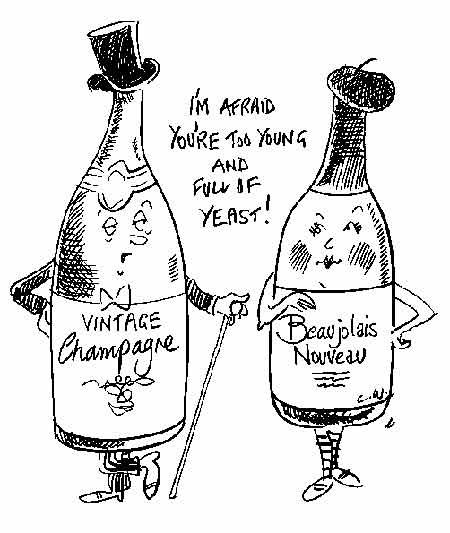|
|
| Troublesome Tipples |
|
Hayley Tink is yeast intolerant – which ruled most wines off her menu. So she was thrilled to discover that champagne is, in fact, yeast free. She explains how – and looks at the viniferous possibilities for other food allergic/intolerant people. |
|
In the UK, current food labelling regulations do not require any drinks with an alcohol content exceeding 1.2% by volume to list all their ingredients. So, for the majority of wines, we have little idea of what we’re actually drinking – although things may be changing soon – see below. Sulphites are however a common problem – this is a preservative used to keep the wine drinkable for longer periods and is known to cause problems for many people (see the Foods Matter website). However, identifying the presence of sulphites is less of an issue as, under EU rules, sulphites now have to be labelled on the bottle if the finished wine contains more than 10 milligrams per litre of sulphur dioxide (which most stable wines do). Strictly speaking they are not an ingredient as the fining agent is ‘passed through’ the wine – but small traces may remain in the wine once bottled and so are likely to cause problems for those with a severe allergies. Hayley’s Organic,
Free-from Shortlist Country/Type - Manufacturer - Name Two When I asked similar questions of some of the other larger supermarkets I did not get particularly helpful replies. Hopefully this might change in the future. Three It uses a simple tick box system to indicate a wine’s suitability for vegans and covers all kinds of wine, as well as some beers and spirits. The website allows you to search for specific supermarket products, so you can shop for wines along with your normal weekly shop. Thank you to Matt of Veggiewines for his assistance in my research. If you prefer to do your wine shopping at the supermarket, Sainsbury’s own brand ‘Taste the difference’ and ‘SO Organic’ wines (plus beer and cider), now have the suitability for vegetarians or vegans indicated on the back label of the product concerned. Sainsbury’s also told me that they are currently working with their suppliers to have the suitable for vegetarians or vegans indicated on the back label where applicable on other products too. I hope this information has been helpful – so happy allergy-free tasting! I am now off to research allergen-free beers and spirits.... First published in 2008. Updated January 2014 Click here for more articles on yeast intolerance
|













